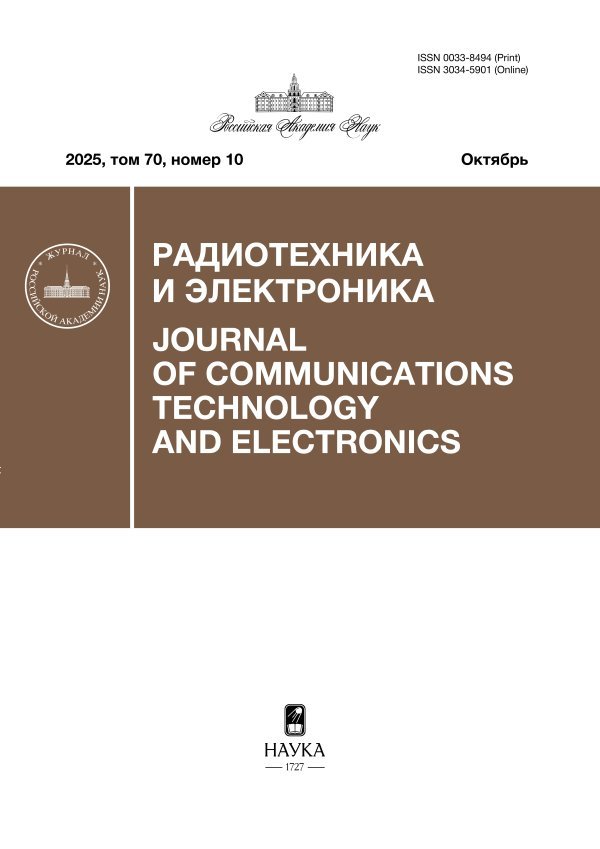Synchronization of M-sequences based on fast Нadamard transform
- Authors: Gorgadze S.F.1, Vu Shi D.1, Ermakova A.V.1
-
Affiliations:
- Moscow Technical University of Communication and Information
- Issue: Vol 69, No 2 (2024)
- Pages: 122-136
- Section: THEORY AND METHODS OF SIGNAL PROCESSING
- URL: https://rjsvd.com/0033-8494/article/view/650707
- DOI: https://doi.org/10.31857/S0033849424020031
- EDN: https://elibrary.ru/KMXKJN
- ID: 650707
Cite item
Abstract
Options have been developed for constructing circulant matrices of any M-sequence (MS) based on automorphic multiplicative groups of the extended Galois field, constructed using an irreducible primitive polynomial, on the basis of which the original MS is formed. The result of this approach is the identification of new methods for transforming MS circulant matrices to a matrix of Walsh functions, ordered by the powers of the antiderivative element of the field. It is shown for the first time that, depending on the initial conditions of the transformation, a set of any number of any cyclic shifts of the MP, shifted relative to each other by one symbol, can be transformed to any rows of the ordered matrix of Walsh functions, following one another. This circumstance makes it possible to simplify the MS synchronization algorithm for a known range of its cyclic shifts, especially in the case of large periods of its repetition, and also to reduce the computational complexity of the processing algorithm when working in a truncated basis of Walsh–Hadamard functions.
Full Text
About the authors
S. F. Gorgadze
Moscow Technical University of Communication and Information
Author for correspondence.
Email: s.f.gorgadze@mtuci.ru
Russian Federation, Moscow
Dao Vu Shi
Moscow Technical University of Communication and Information
Email: s.f.gorgadze@mtuci.ru
Russian Federation, Moscow
A. V. Ermakova
Moscow Technical University of Communication and Information
Email: s.f.gorgadze@mtuci.ru
Russian Federation, Moscow
References
- Ипатов В.П. Широкополосные системы и кодовое разделение сигналов. М: Мир связи, 2007.
- Beard C., Stallings W. Wireless Communication Networks and Systems. L.: Pearson, 2016.
- Middlestead R.W. Digital Communications with Emphasis on Data Modems. Theory, Analysis, Design, Simulation, Testing and Applications. Lesly (USA): Wiley, 2017.
- Лосев В.В., Бродская Е.Б., Коржик В.И. Поиск и декодирование сложных дискретных сигналов. М.: Радио и связь,1988.
- Maral G., Bousquet M., Sun Z. Satellite Communications Systems. United Kingdom: Wiley, 2020.
- Волков Р.В., Саяпин В.Н., Севидов В.В. // T-Comm: Телекоммуникации и транспорт. 2016. Т. 10. № 9. С. 14.
- Кулакова В.И. // Системы управления, связи и безопасности. 2020. № 1. С. 33.
- Музыченко Н.Ю. // РЭ. 2019. Т. 64. № 1. С. 44.
- Gold R. // IEEE Trans. 1967. V. IT-13. № 4. P. 619. https://doi.org/10.1109/TIT.1967.1054048
- Зубарев В.Ю., Пономаренко Б.В., Шанин Е.Г., Вострецов А.Г. // Изв. вузов России. Радиоэлектроника. 2020. Т. 23. № 2. С. 26.
- Варакин Л.Е. Системы связи с шумоподобными сигналами. М.: Радио и связь, 1985.
- Смирнов Н.И., Горгадзе С.Ф. // Зарубеж. радиоэлектроника.1997. № 5. С. 41.
- Горгадзе С.Ф., Ву Ши Д. // T-Comm: Телекоммуникации и транспорт. 2023. Т. 10. № 8. C.4.
- Лосев В.В., Дворников В.Д. // РЭ. 1983. Т. 28. № 8. С. 1540.
- Горгадзе С.Ф. Синхронизация в инфокоммуникационных системах. М.: Медиа Паблишер, 2022.
- Шахтарин Б.И., Черныш А.В. // Вестн. МГТУ им. Н.Э. Баумана. Сер. Приборостроение. 2009. № 3. С. 114.
- Горгадзе С.Ф. // РЭ. 2005. Т. 50. № 3. С. 302.
- Горгадзе С.Ф. // РЭ. 2006. Т. 51. № 4. С. 428.
- Ву Ши.Д., Горгадзе С.Ф. // DPSA: Вопросы применения цифровой обработки сигналов. 2023. Т. 13. № 1. С. 31.
- Ву Ши.Д., Горгадзе С.Ф. // Телекоммуникации и информ. технологии. 2022. Т. 9. № 2. С. 1207.
- Смольянинов В.М. // РЭ. 1985.Т. 30. № 12. С. 2391.
- Be’ery Y., Snyders J. // IEEE Trans. 1986. V. IT-32. № 3. P. 355.
- Be’ery Y., Snyders J. // J. Algebraic Discrete Methods. 1987. V. 8. № 4. P. 778.
- Смольянинов В.М., Назаров Л.Е. // РЭ. 1987. Т. 32. № 11. С. 2341.
- Смольянинов В.М., Назаров Л.Е. // РЭ. 1989. Т. 34. № 12. С. 2651.
- Смольянинов В.М., Назаров Л.Е., Прокофьев И.В. // РЭ. 1989. Т. 34. № 8. С. 1686.
- Li Ping W.K., Leung K.Y. // IEEE Trans. 2003. V. IT-49. № 12. Р. 3213.
- Канатова Л.В., Литвинов В.Л., Финк Л.М. // Проблемы передачи информации. 1986. Т. 22. Вып. 2. С. 98.
- Питерсон У., Уэлдон Э. Коды, исправляющие ошибки. М.: Мир, 1976.
- Свердлик М.Б. Оптимальные дискретные сигналы. М.: Сов. радио, 1975.
- Трахтман А.М., Трахтман В.А. Основы теории дискретных сигналов на конечных интервалах. М.: Сов. радио, 1975.
- Ву Ши.Д., Горгадзе С.Ф. // Технологии информационного общества: Сб. трудов XVI Междунар. отраслевой науч.-технич. конф. М., 2022. С. 88.
Supplementary files












